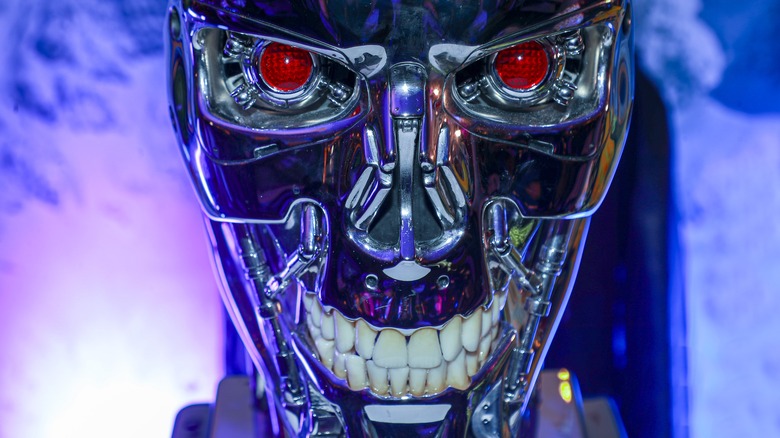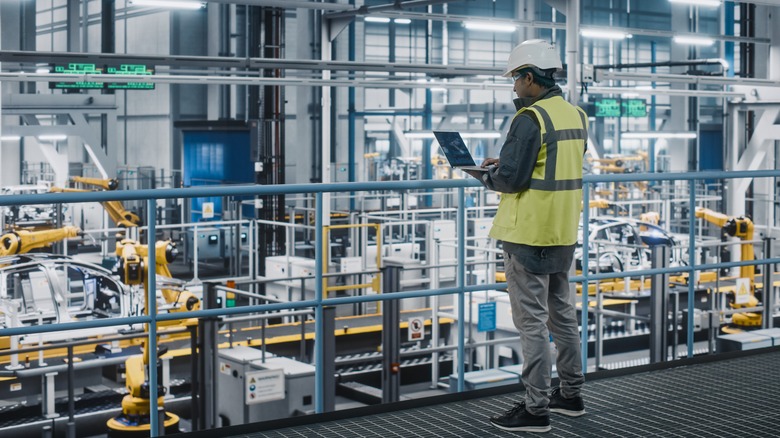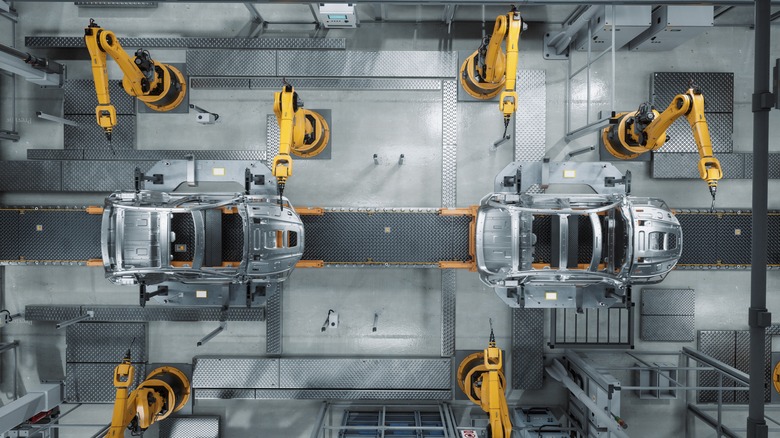The True Story Of The First Human Killed By A Robot
In today's modern age, it's difficult for millions of us around the world to even imagine life without technology. On first awakening, bleary-eyed and full-bladdered in the morning, what do we often do? Reach for our smartphones, that's what. In January 2016, the study "Bedtime mobile phone use and sleep in adults," from Liese Exelmans et al (via the National Library of Medicine) concluded that "longer sleep latency, worse sleep efficiency, more sleep disturbance and more daytime dysfunction" appeared connected to smartphone use around bedtime, but it's just so hard to resist that last social media fix of the day.
Technology has undoubtedly enriched our lives, and in a vast range of paradigm-shifting ways too. One of the most significant is that machines can perform all kinds of jobs that would be laborious or dangerous for us. However, is our increasing reliance on machines a great danger in and of itself?
If the likes of the "Terminator" movies have taught us anything, it's that continuing advancement in the field of artificial intelligence is a dangerous path to tread. Robots have seemed to have issues with humanity since the earliest machines were created, as the sad story of the first human killed by such a machine makes clear.
A tragic accident
Machinery and robots don't need to have vicious, humanity-hunting tendencies (as they often do in the movies) to harm us. By dint of their often-industrial uses, many of them have blades, deadly crushing force, or just the general heft to cause terrible injuries or kill people inadvertently. Stringent safety measures should be employed when working alongside such machines. Yet, it was a tragic inevitability that, as machines became more and more prominent in workplaces, accidents would occur, with fatal results.
According to Guinness World Records, the first person to be killed by a robot was 25-year-old Robert Williams. The tragedy took place in Flat Rock, Michigan on January 25, 1979. Williams had been working at a plant of the Ford Motor Company, the outlet reports, and had been gathering car parts for transport when he ran afoul of a robot that was tasked with doing the same. The machine's function was to take such parts where they needed to be around the plant, and in the line of duty, its arm collided with Williams.
Williams' family was awarded a substantial amount in the settlement
Per How Stuff Works, the plant's machine to count stock had failed, so Williams had climbed a precarious storage unit to count the various parts himself. While he was in the process, the robot that gathered and distributed the parts began working again. The formidable arm of the machine hit Williams — who seemingly had not heard it operating — in the head.
In a harrowing report from the Ottawa Citizen, dated August 11, 1983, it's revealed just how horrific the incident was. After Williams was struck by the machine and instantly died, it was around 30 minutes before his co-workers noticed his absence and discovered his body. The machine, meanwhile, just continued to go about its duties.
The newspaper went on to report that the Wayne County Circuit Court awarded Williams' widow, three children, five sisters, and his mother $10 million (reportedly a state record for a personal injury case), after his relatives sued the errant robot's manufacturer, Unit Handling Systems. The Ford plant ceased to operate after the tragedy.
According to the Ottawa Citizen, Williams' family attorney Joan Lovell said the family was very close. "I've seen a lot of people who have been injured," Lovell said, "but this family was particularly devastated by this loss."


